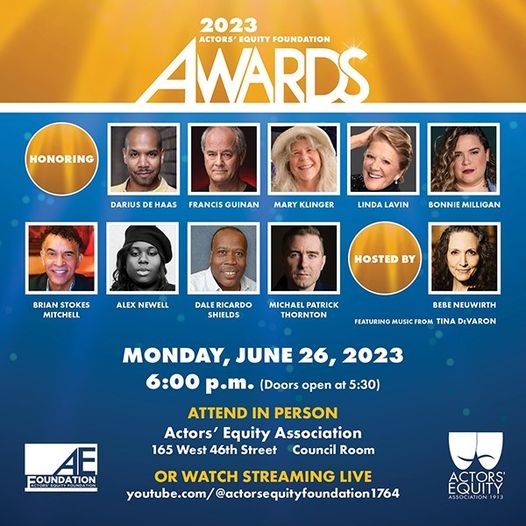THE SHIELDS BROTHERS
The Shields Brothers, a mainstay of Cleveland’s gospel music scene for more than seventy years.
by Dale Ricardo Shields
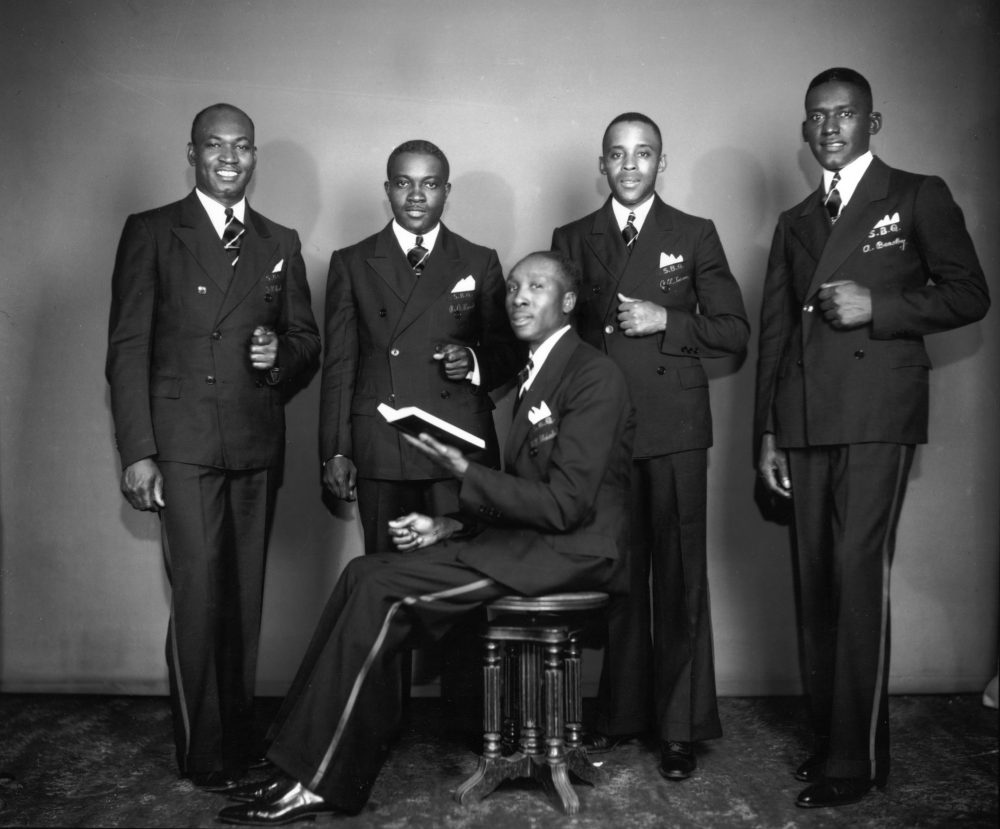
Photograph by Allen E. Cole
{ For my Grandfather and Father… singing with the Angels }
“The Shields Brothers began their singing career in 1928. The group members were Lee Crosby, Arthur Beasley, Arthur Turner, James Henderson, and Claude Shields Sr. (center).”
Cleveland’s premiere gospel quartet for more than seventy years. They paved the way for Black gospel quartet music as we know it today. Together they paved the way for Black gospel quartet music in Ohio.
Their most popular song was When the Roll Is Called in Heaven, I’ll Be There.”
The Shields Brothers included radio personality and promoter, Arthur Turner (second from right) who joined the group in 1930. Arthur Turner was a respected Gospel music promoter who broadcasted on WABQ and WJMO radio stations, beginning a career in broadcasting in 1948.
The Shields Brothers
“The term Gospel quartet refers to several different traditions of harmony singing. Its origins can be traced back to slavery; its sound, is varied, including 4-part hymn singing, shape note singing, jubilee songs, spirituals, and gospel songs. Gospel quartets sing in four-part harmonies, a part given to the tenor or highest part; lead, which usually takes the melody baritone which blends the sounds and adds richness; and the bass, or lowest part. It’s not uncommon for quartets to switch parts between each member. But it’s the powerful, colorful, charismatic lead singer that touches the audience and brings life to the gospel quartet’s performance.
The Shields Brothers were a mainstay of Cleveland’s gospel music for more than seventy years. The Shields Brothers began singing in 1928. The members were Lee Crosby, Arthur Beasley, Arthur Turner, James Henderson, and Claude Shields Sr. Together they paved the way for black gospel quartet music in Ohio. Their most popular song was, “When the roll is called in Heaven, I’ll Be There.” The Shields Brothers were frequent guest singers on gospel radio and traveled across the country on the Gospel Quartet circuit; they were known for their sweet harmonious voices. Their uniformity and style became the model for other Cleveland male quartets to pattern themselves after.” – https://www.gospelmusichistoricalsociety.com/legends
Arthur Turner
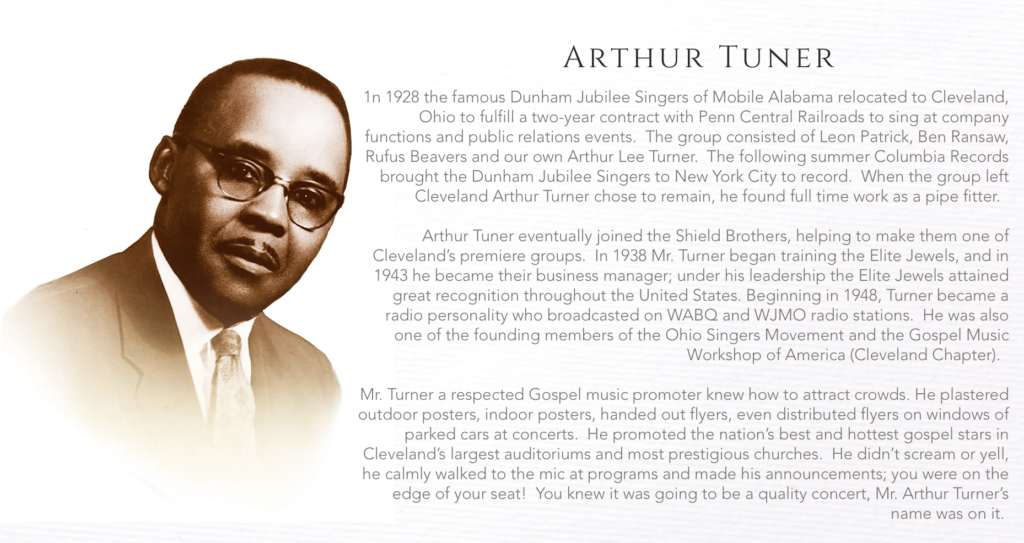
https://www.gospelmusichistoricalsociety.com/legends
For 52 years, he managed the Elite Jewels and he was the last original member of the Shields Brothers. He was also one of the founding members of the Ohio Singers Movement and the Gospel Music Workshop of America (Cleveland Chapter).
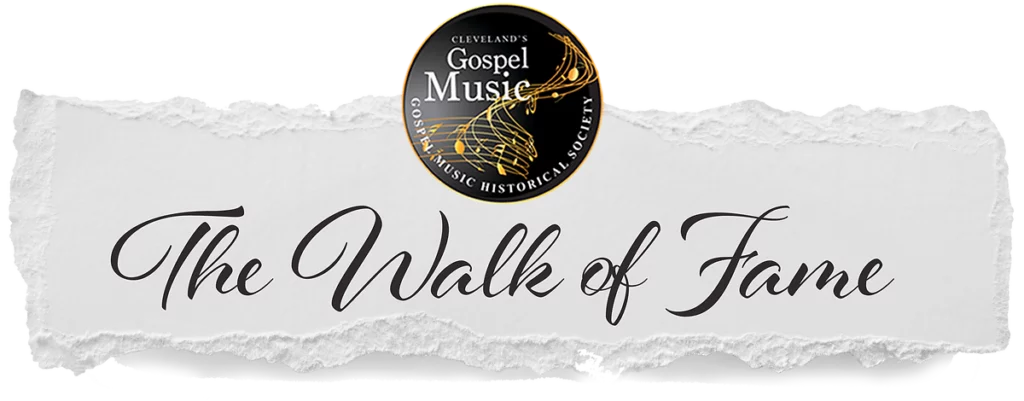
“Following the thread of the great gospel soloist, announcers, quartets, choirs, groups, producers, songwriters, photographers, choir directors, ministry leaders, poets, speakers, and artists from Cleveland, Akron, Canton, Youngstown, and the surrounding areas; we find our foundation; why we sing and why we’re so brilliant at it.”
The Gospel Music Historical Society is a public charitable foundation whose purpose is to educate, promote, and preserve the rich heritage of gospel music. This is done through education, event programming, networking, and workshops. We use our resources to encourage and support the success of GMHS Gospel artists. We raise funds and make gifts and donations in support of the arts, education, literacy, health, welfare, and organizations that further our purpose.
The Shields Line
The Shields line started as early as we can find with Soloman Shields in 1800 born in South Carolina. His son Tom (b.1822) and his wife Susan (b.1835) Shields were born in Crumptonia, Alabama on the Cochran plantation. The plantation house is still there although it is not open to the public.
Tom and Susan had four children. Adam Wilson who may have been Tom’s son by another woman was born in 1859 and married Katie Seltzer. So, DNA test with Wilson, that is the Shields family. Adam and Katie had three children, Captain Wilson (1884), William Willson (1887), and Leon Sellzer (1910). Tom and Susan’s second son Barry Shields (1822) married Married Mariah Selzer (1865-1945) who would be my great-grandfather. Their daughter Patsey Shields was born in 1875 and their son Tommie Shields was born in 1877.
Cochran House at Crumptonia near Orrville, AL (built c. 1855)
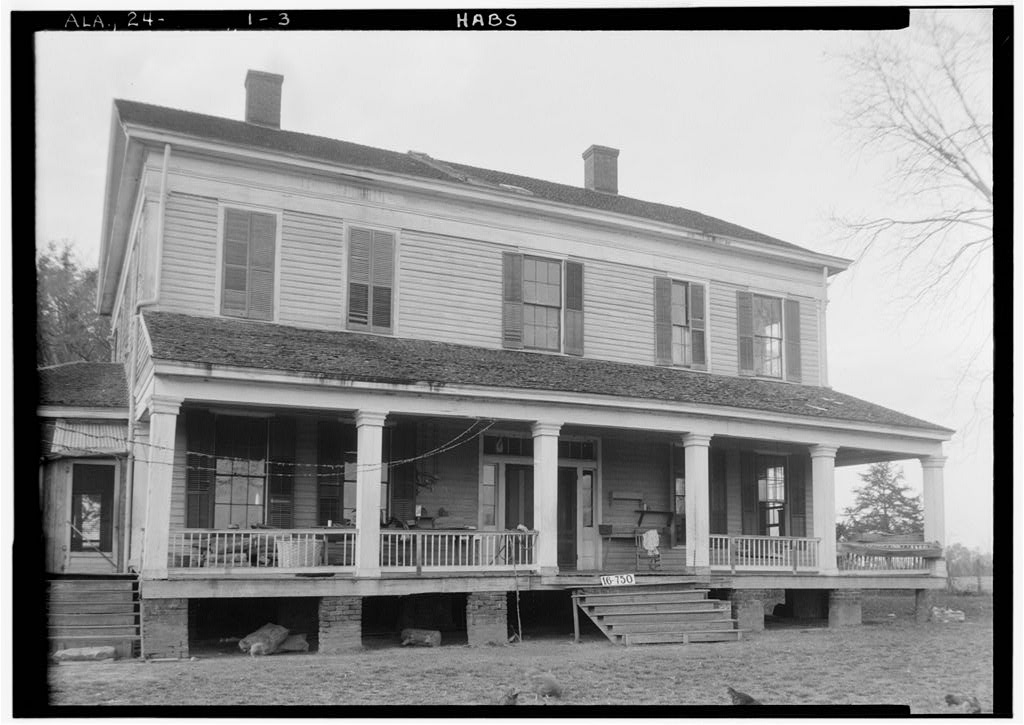
Antebellum, Historic Home | Crumptonia in Dallas County
“Crumptonia is an unincorporated community in Dallas County, Alabama.[2] It is named for a local plantation house of the same name, built in 1855 by Claudius M. Cochran and later owned by the Crumpton family.” [Wilipedia]
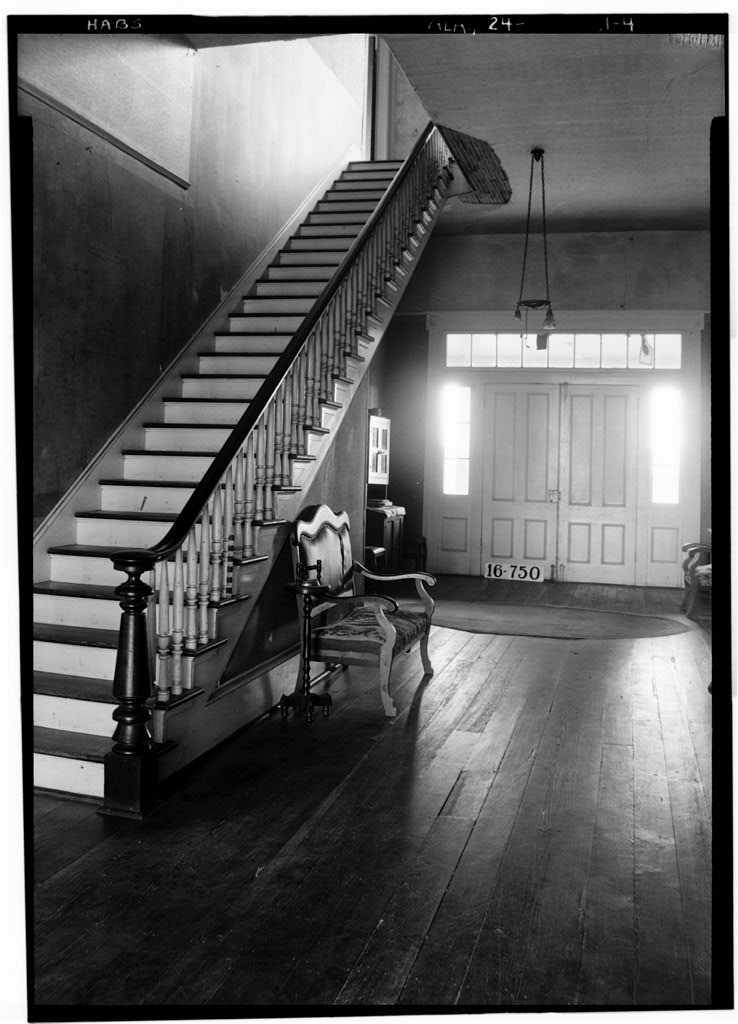
Also referred to as the Cochran-Crumpton House, Crumptonia, and the McCrary House, this 2-story Greek Revival style home was built circa 1855 for South Carolina-born, Claudius M. Cochran. It was later owned by the Crumpton family and it became part of the Crumptonia Plantation. The front of this house is almost identical to those of the McMillan-Oxford House, Tasso, and Moseley Grove which are also located in the vicinity of Orrville. The Cochran House was documented in the Historic American Buildings Survey (HABS) in 1934. It is featured in “Silent in the Land” by Chip Cooper, Harry J. Knopke, and Robert S. Gamble.
This house is located approximately 8 miles southwest of Orrville on Dallas CR 21 (32°12’49.2″N 87°17’22.9″W – Google Maps).
This is a private residence – drive by only.
Sources: 1) wikipedia.org/Crumptonia_Alabama; 2) “Silent in the Land” by Chip Cooper, Harry J. Knopke, and Robert S. Gamble; 3) “The Alabama Catalog: A Guide to the Early Architecture of the State” by Robert S. Gamble.
B&W photographs courtesy US Library of Congress (HABS), photographer: W. N. Manning, date: March 17 & 23, 1934. The recent photographs that are provided were taken in February 2012.


Claudius McRelas Cochran
Birthdate: January 31, 1804
Birthplace: Marlboro County, South Carolina, United States
Death: February 22, 1884 (80)
Dallas County, Alabama, United States
Place of Burial: Martins
Immediate Family:
Son of Lt. Thomas Cochran and Elizabeth Hunter Cochran
Husband of Eleanor Bainbridge Cochran
Father of Robert M. Cochran; Eleanor Cochran; William Alexander Cochran; Elizabeth Jane Cochran; Ellen Pouncey Cochran and 1 other
Half-brother of Nancy (Ann/Anne) Cochran Hamer; Robert Cochran; Rachel Bethea; Margaret Bethea; Thomas Cochran and 2 others
Occupation: Postmaster
The Shields line started as early as Soloman Shields in 1800 born in South Carolina. His son Tom (b.1822) and his wife Susan (b.1835) Shields were born in Crumptonia, Alabama on the Cochran plantation. The plantation house is still there although it is not open to the public. Tom and Susan had four children. Adam Wilson who may have been Tom’s son by another woman was born in 1859 and married Katie Seltzer. On the several DNA tests I have taken, There are more Wilson matches than Shields. So if one should see a DNA test with Wilson, that is the Shields family. Adam and Katie had three children, Captain Wilson (1884), William Willson (1887), and Leon Sellzer (1910). Tom and Susan’s second son Barry Shields (1822) married Married Mariah Selzer (1865-1945) who would be my great-grandfather. Their daughter Patsey Shields was born in 1875 and their son Tommie Shields was born in 1877.

Early Origins of the Shields Family
The surname Shields was first found in the Ulster region counties of Donegal, Derry, Antrim, and Down. This family is reputed to be descendants of the great King Niall of the Nine Hostages. The motto was originally a war cry or slogan. Mottoes first began to be shown with arms in the 14th and 15th centuries but were not in general use until the 17th century.
Shields Family History
Meaning ‘of Shields’, this is a locational name from the seaport and market town in County Northumberland. This name is of Anglo-Celtic origin and is popular throughout England, Ireland, Scotland, and Wales.
Before 1840, a White farmer from the Pee Dee region of Marlboro County in South Carolina settled in an area of Dallas County, Alabama which was then known as the Lexington Beat. His name was Claudius M. Cochran. To provide labor for his farm, Claudius brought along 26 slaves belonging to him. John Cochran was one of the slaves. John was about 10 years old in 1840. The slaves could have been John’s siblings, cousins, parents, etc. Slaves were only enumerated and identified as male or female between certain age brackets. In 1855 Claudius M. Cochran built a large plantation house, which took on the name, the Cochran Plantation House. My GGG Grandfather John Cochran was one of the slaves that built the Cochran Plantation house. The house still bears that name today, “Cochran Plantation House) in Alabama. The community that was then known as the Lexington Beat became known as Crumptonia after one of Claudius’s daughters married into a prominent family by the name of Crumpton.”
Claude Shields Sr.
“In Post-World War I Era Cleveland, a popular destination for African American migrants from the South, gospel music became increasingly popular. This growing popularity was due in no small measure to the business acumen of people like Claude Shields Sr., quartet singer, and owner of the Shields Brothers Cleaners on Cedar Avenue. Since the 1920s, Cleveland’s gospel quartet artists have not hesitated to support the recording of the music, public programs, and publications about gospel’s influence on other styles of American music, including Rock and Roll.” – Cleveland and the Rise of Gospel Blues
Berry Shields – Father – [Grand Parents} Thomas Shields and Susan.
Mariah Seltzer – Mother – [Grand Parents} Bill Selzer and Fannie Mcquire.
Claude Sr. had ten siblings: Isabella, Mary, Fannie, Maggie, Berry Jr., Louise, Claude, David, Willie, Coleman, and John.
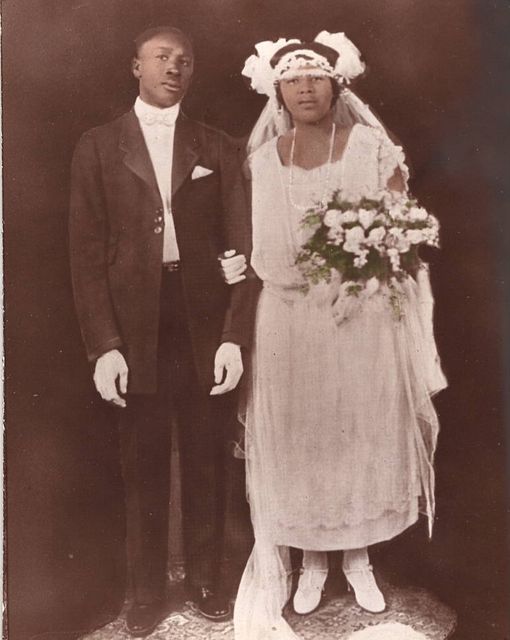
Claude Shields and Johnnie Calloway

(Johnnie, Claude Jr., John and Claude Shields Sr.)
Johnnie Calloway Shields is the sister of Hattie Lynn King,

The mother of fight promoter Don King and the late Joesph Lynn (actor).
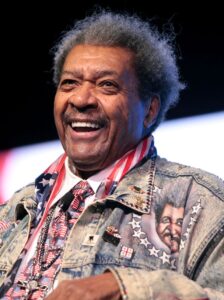
Claude Shields Jr. married Fannie and had two sons, Gerald and Dale.
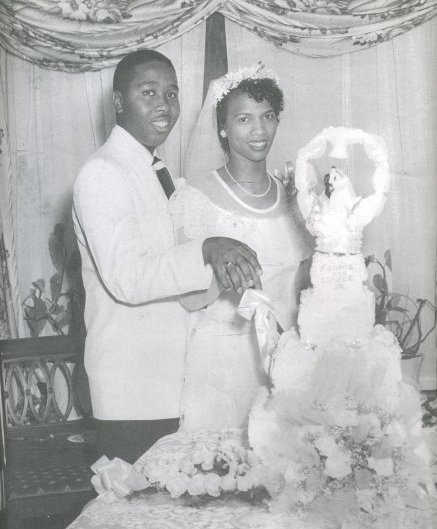
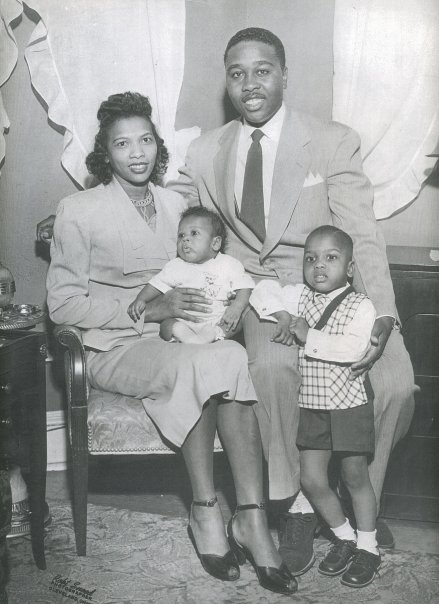
Fannie, Dale, Claude, and Gerald Shields – 1952
John Shields married Audrey and had three children, Dwayne, Jean, and Sharon.
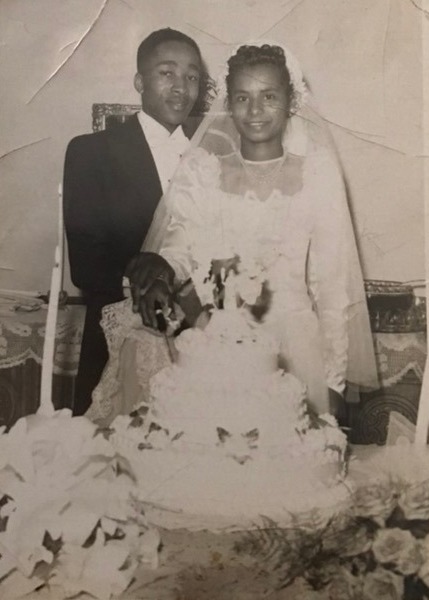
Fannie Shields

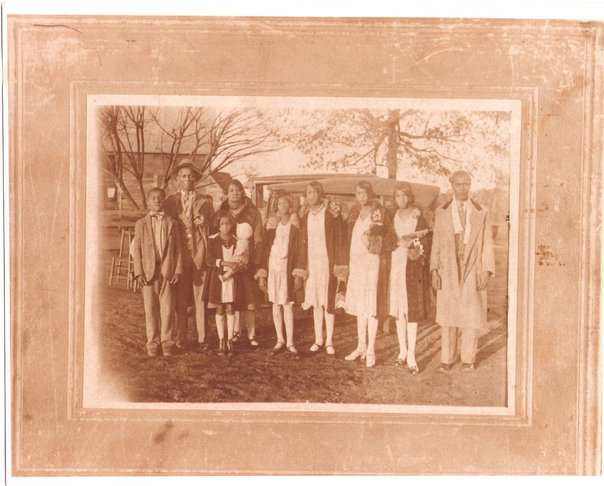
One of 7 surviving brothers and Sisters from Mobile (Burnt Corn) Alabama.
Parents – John and Frettie Sanders.
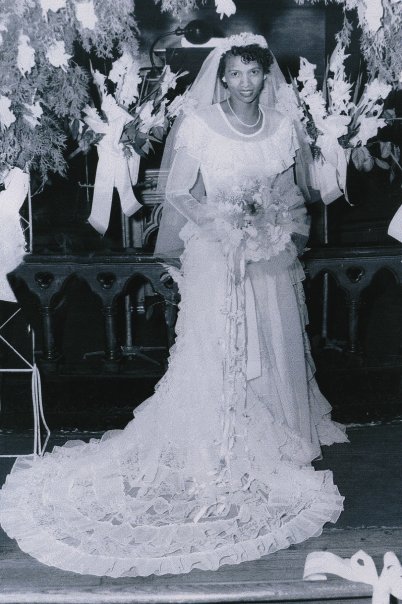
The Sanders and Shields Family at the wedding of Claude and Fannie Shields (August – 1949)
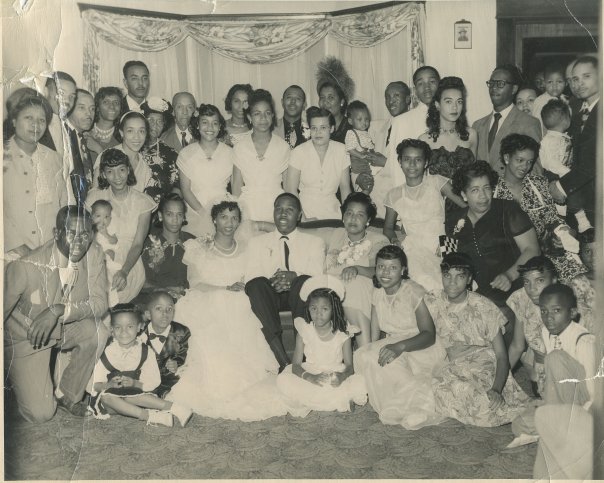
The couple met singing on the Cleveland, Ohio Gospel music circuit. In 1949, Claude Shields Jr married Fannie Sanders. She along with her sister, Frettie Jackson sang with the Turner Gospel Singers under the direction of William Turner.
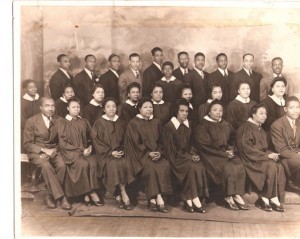
The Turner Gospel Singers
The union produced two sons, Gerald and Dale.
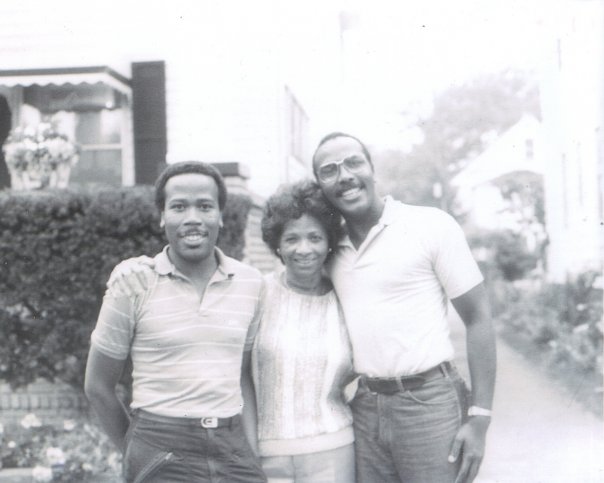
Dale and Gerald with their Mother.
Gerald was drafted into the Army, entered the business world, and retired as an academic administrator in Higher Education. He is the father of two sons, Torin and Michael.
Dale moved to New York City and spent 22 years there as a professional theatre artist. After completing a Master of Fine Arts in theatre from Ohio University, Dale entered Academic theatre and went on to win the Kennedy Center Stephen Sondheim Teaching Award and the 2021 Paul Robeson Award among many other awards for his Artistic Activist and Historian work on the world wide web. His website Iforcolor.org is now nationally respected.
The Shields Brothers
“In the Post-World War I Era in Cleveland, a popular destination for African American migrants from the South, gospel music became increasingly popular. This growing popularity was due in no small measure to the business acumen of people like Claude Shields Sr., quartet singer, and owner of the Shields Brothers Cleaners on Cedar Avenue.
Since the 1920s, Cleveland’s gospel quartet artists have not hesitated to support the recording of the music, public programs, and publications about the gospel’s influence on other styles of American music, including Rock and Roll.”

Claude Shields Sr. owned and operated a dry cleaning company for over forty years under the name of the Shields Brothers Cleaners.
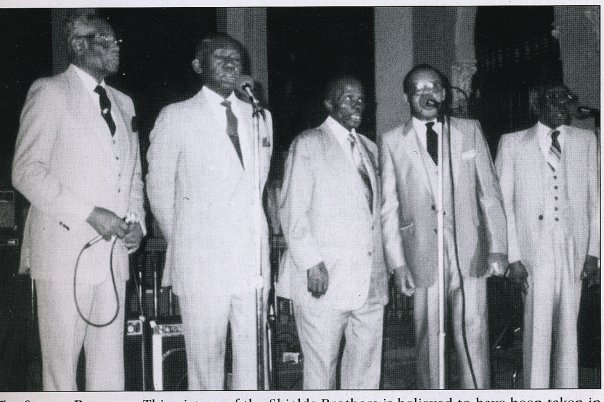
The Shields Brothers Senior’s last performance (the 1970s). The Shields Brothers were frequent guest singers on gospel radio and traveled across the country on the Gospel Quartet circuit. They were known for their sweet harmonious voices and sang consistently for 70 years.

Pictured here in the 1940s with a trophy won in a competition for enunciation, appearance, stage performance, and harmony, The Jubilee Four were a group of two sets of brothers and a neighbor, who began singing together in Cleveland, Ohio in the 1930s.
The group sang together until three of the members were drafted to serve in World War II. The members included Clifford Phelps, William Phelps, Eugene Ross, Johnny Shields, and Claude Shields Jr. They were later renamed The Shields Brothers.
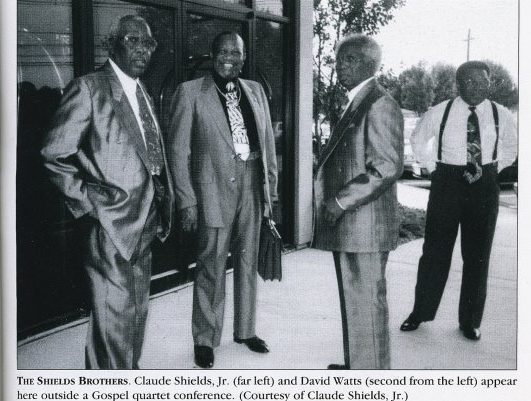
Claude Shields Jr.
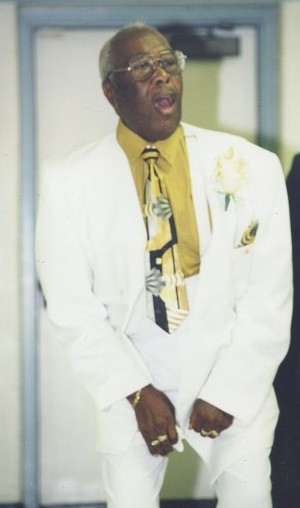
Claude Shields Jr. (1997)

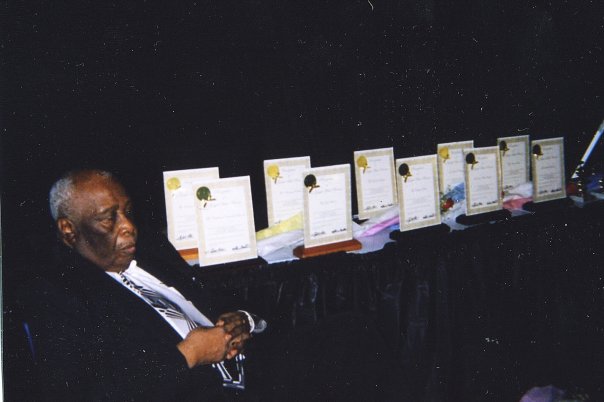
Claude Shields Jr. received awards at Cleveland State University (2005).
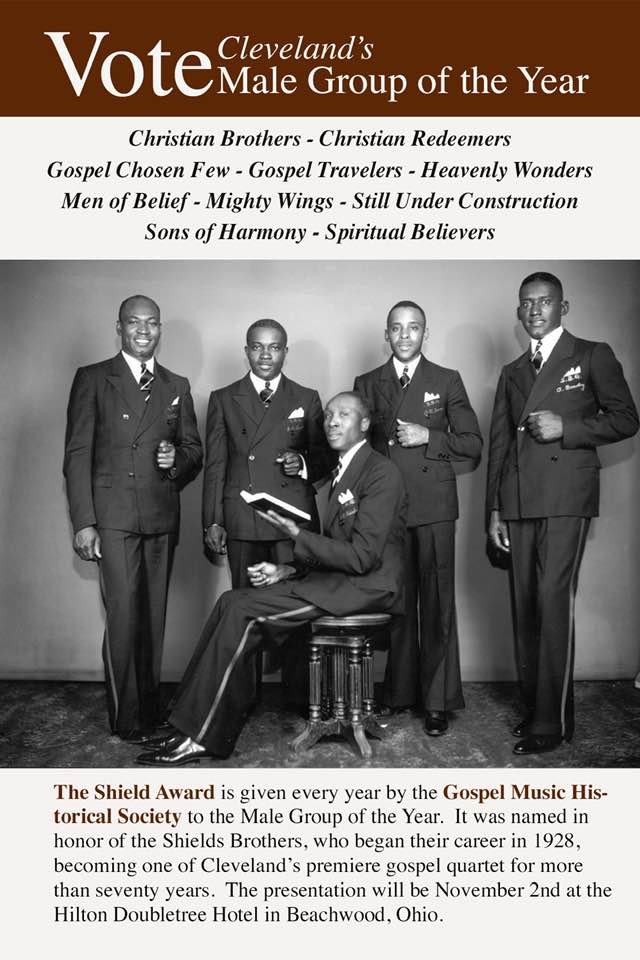
The Gospel Music Historical Society presents a Black Tie Awards Gala; on Saturday, November 2, 2019, at the Doubletree by Hilton in Beachwood, Ohio. See GMHS members for tickets and voting ballots.
DALE RICARDO SHIELDS
Activist-Artist-Historian
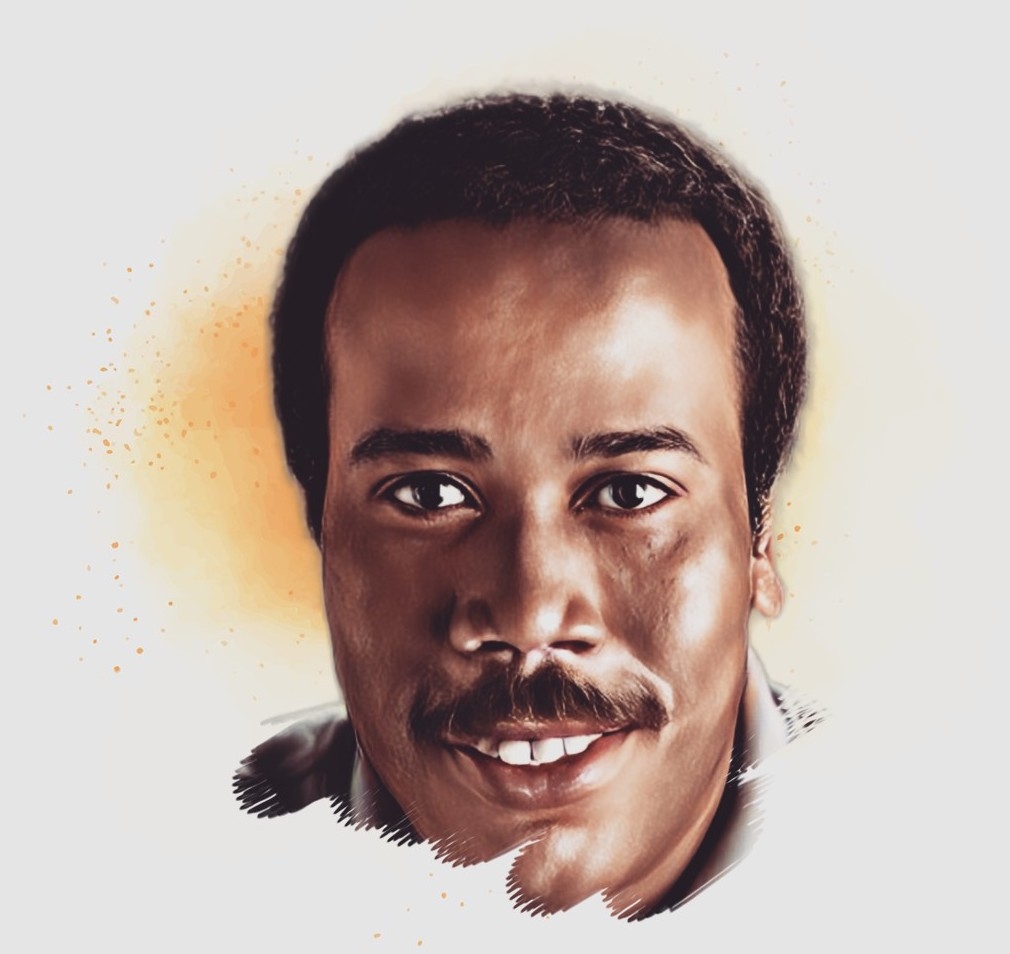
Dale Shields holds a legendary and award-winning resume as an artist educator, historian, and activist in the arts. His professional work as an actor, director, and stage manager spans Broadway, off-Broadway, television, and film and includes acting credits on “Anyone Can Whistle,” “The Cosby Show” and “Saturday Night Live.”
As an educator, Shields has taught workshops and classes for several programs and institutions across Ohio and the United States, garnering him prestigious awards that include the 2017 Kennedy Center/Stephen Sondheim Inspirational Teacher Award®, the 2017 AUDELCO/“VIV” Special Achievement Award, The Actors Fund 2020 and 2021 ENCORE AWARD, 2015 Tony Award® nomination for the Excellence in Theatre Education Award and the 20222 Legend Award (Ohio University). He is the 2021 winner of the Paul Robeson Award, presented (jointly) by the Actors Equity Association and the Actors Equity Foundation.
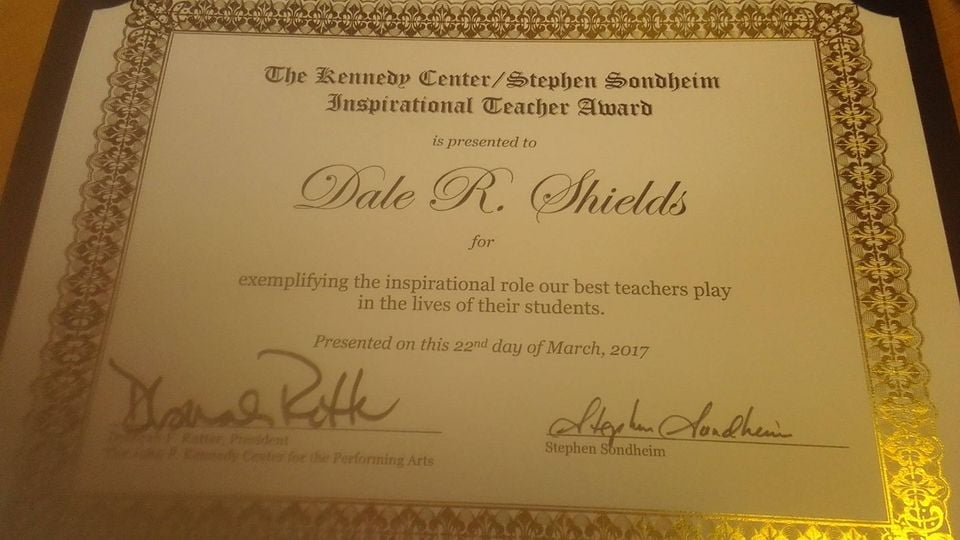
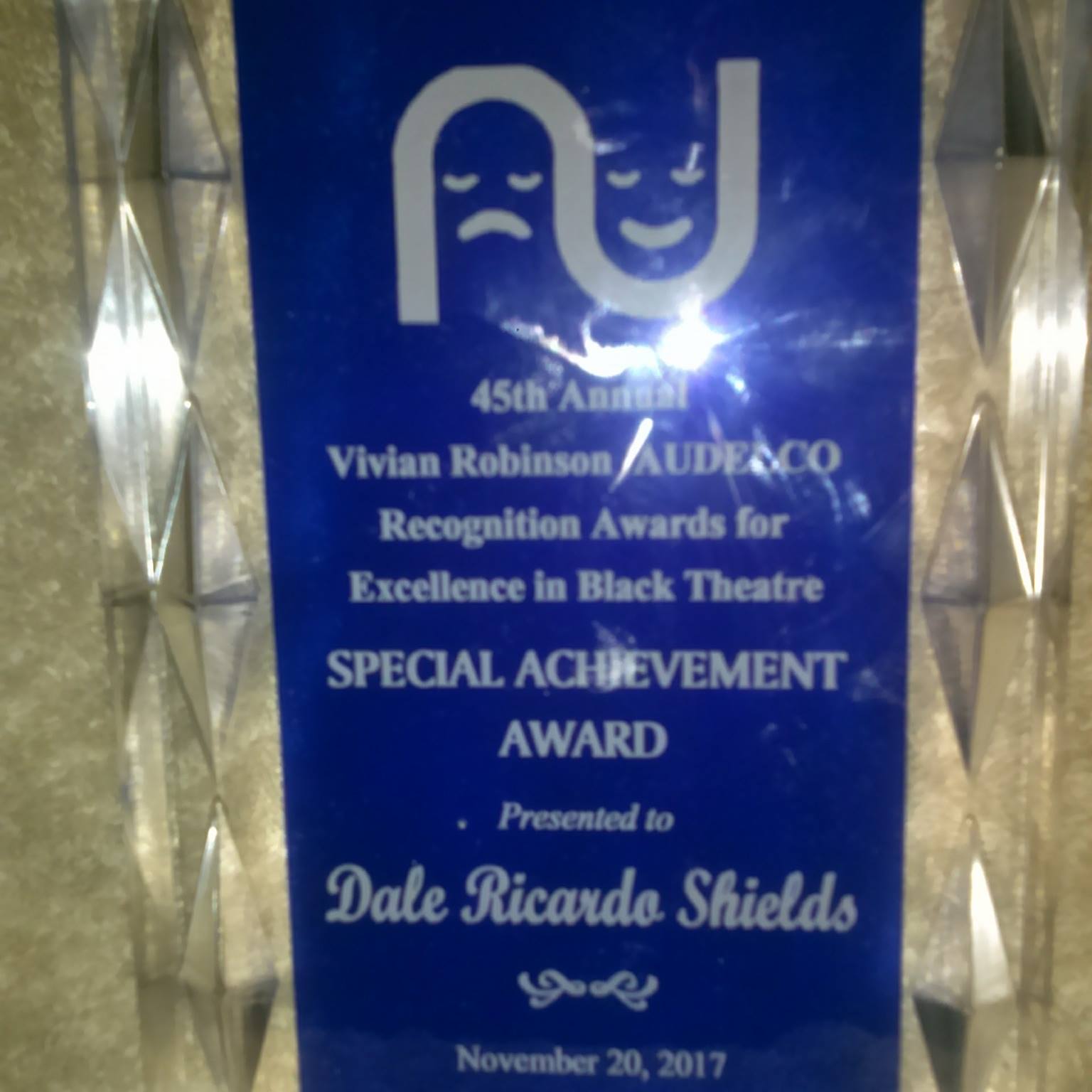
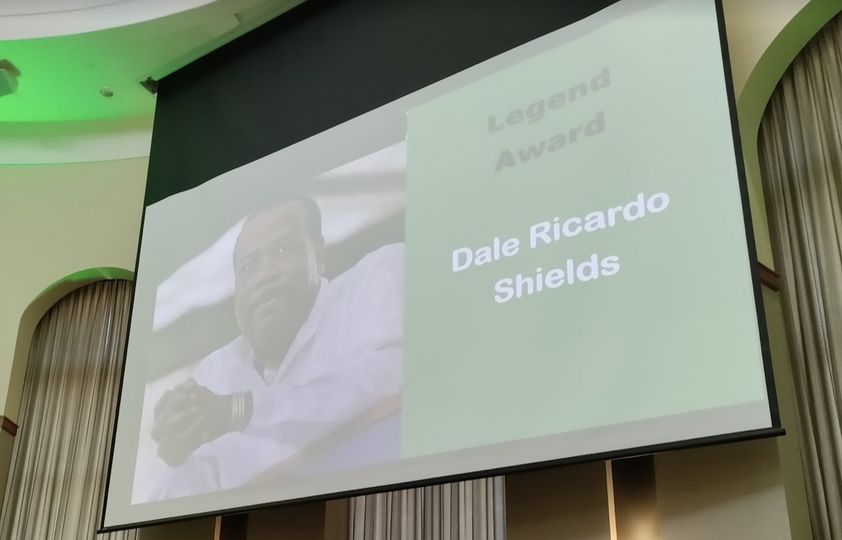
“Dale Ricardo Shields, BFA ’75, MFA ’95, whose marks on the world and the lives of others place each in a league of its own. Shields holds a legendary and award-winning resume as an artist educator, historian, and activist in the arts. His professional work as an actor, director, and stage manager spans Broadway, off-Broadway, television, and film and includes acting credits on “Anyone Can Whistle,” “The Cosby Show” and “Saturday Night Live.” As an educator, Shields has taught workshops and classes for several programs and institutions across Ohio and the United States, garnering him prestigious awards that include the 2017 Kennedy Center/Stephen Sondheim Inspirational Teacher Award®, the 2017 AUDELCO/“VIV” Special Achievement Award, The Actors Fund 2020 and 2021 ENCORE AWARD, and a 2015 Tony Award® nomination for the Excellence in Theatre Education Award. Shields’ drive to preserve the history of African American and Black actors includes the creation of the Facebook website Black Theatre/African American Voices and IForColor.org. He is the 2021 winner of The Paul Robeson Award presented jointly by the Actors Equity Association and Actors Equity Foundation”
© 2022 Ohio University
Shields’ drive to preserve the history of African American and Black actors includes the creation of the Facebook website Black Theatre/African American Voices and IForColor.org.
THE PAUL ROBESON AWARD
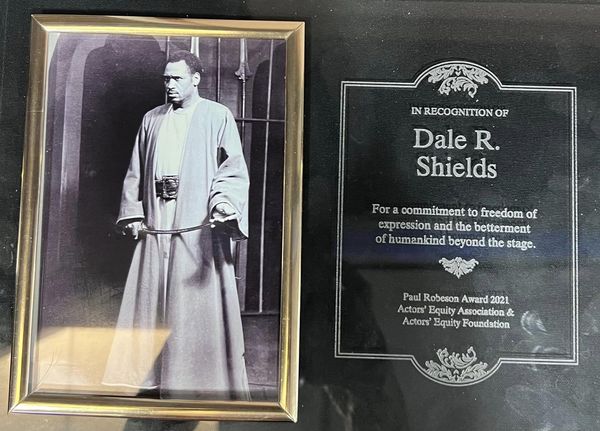
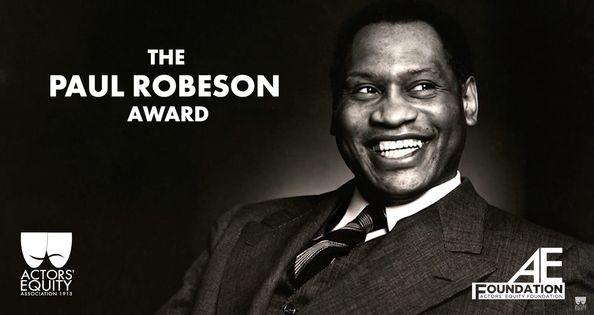
The Paul Robeson Award from Actors Equity and The Actors Foundation! The Award Plaque is engraved with the following words:
Dale R. Shields
For a commitment to Freedom of expression and the betterment of human kind beyond the stage.
“Dear Artist – I honor your stories… – I treasure your history
“What can be said at all can be said clearly, and whereof one cannot speak, thereof one must be silent.”
Loudly… I thank the Paul Robeson Committee and the office of Diversity and Inclusion office for your work and this award … and for graciously inviting me here.
*
Thank you to my friends who nominated me.
I give honor to the great Paul Robeson.
Athlete, actor, singer, cultural scholar, author, and political activist. A spokesman for Civil Rights.
Paul Robeson was a 20th-century Renaissance man.
Yet his radical political beliefs all but erased him from popular history.
To this day, Paul Robeson’s many accomplishments remain obscured, – by the propaganda of those who tirelessly dogged him throughout his life.
His role in the history of civil rights … as a spokesperson for the oppressed of other nations remains relatively unknown.
Paul Robeson got involved in civil rights campaigns in many countries, while dealing with McCarthyism in his own backyard, something which would eventually destroy his career.
These are still very intense times culturally and racially.
Paul Robeson said:
“Artists are the gatekeepers of truth.
We are civilization’s radical voice.”
“Every artist, every scientist, must decide now where he stands.
He has no alternative.
There is no standing above the conflict on Olympian heights.
There are no impartial observers.
Through the destruction, in certain countries, of the greatest of man’s literary heritage,
through the ProPagation of false ideas of racial and national superiority,
the artist, the scientist, and the writer is challenged.”
“The struggle invades the formerly cloistered halls of our universities and other seats of learning.
The battlefront is everywhere. – There is no sheltered rear.”
I have learned so much about you, us… and thereby… about myself.
Our greatest responsibility is to be good ancestors by passing our history on… Sharing the stories…
The Art and truth of our experiences… There is no greater validation!
Redefining Cultural Representation in the Arts.
Empowering Children through Historical Factual Racial mKnowledge.
Fostering Inter-generational Conversations with Emotional Intelligence.
Hopefully, that is Robeson’s thing to do. Write on!
I am Dale Ricardo Shields… with the growing moniker of Brother Dale…
I am happy, humbled, and thrilled to be in your company
Tip of the Hat to Mr. Robeson.
Thank you so much. – FORWARD!”
– – Prof. Dale Ricardo Shields
[ Previous recipients of the award include Paul Robeson; Maya Angelou; Harry Belafonte; Ossie Davis and Ruby Dee; James Earl Jones; Athol Fugard; Lena Horne; Joseph Papp; Sidney Poitier; Pete Seeger, and, Baayork Lee. ]
@ ALL RIGHTS RESERVED – Iforcolor.org/Dale Shields
NO COPYRIGHT INFRINGEMENT INTENDED


